Ventech China Insights | Population, industry and society—A little guess about the next 10 years
Increasing penetration of automation and artificial intelligence is regarded as the fourth industrial revolution by many people. With the continuous development and improvement of automation, advanced technology, and increasing productivity, many people began to concern about their job's future, social changes, etc, and worry about being replaced by robots...
This article considers the trend of population changes, and compares various industries' per capita output and profits, with different degrees of automation and technology. After reviewing some real stories in history, it gives a small hypothesis regarding the changes in population, industry, and social development in the next 10 years.

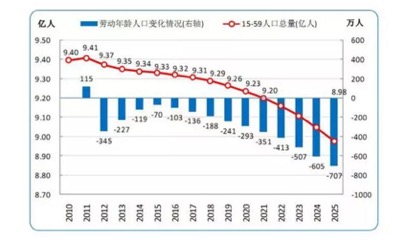
Population:AM I old?
The population is a common topic when it comes to China. Indeed, it has brought unique advantages and powerful driving forces to the development of China's manufacturing industry. However, in recent years, China’s labor force is undergoing structural changes, and the “demographic dividend” is gradually decreasing.
According to statistics from the State Council, the labor force has fallen from 940 million to 920 million in the past 10 years (2010-2021). And it is estimated that the labor force will show a consistent a downward trend in the next 10 years; by 2030, China’s labor force may fall below 900 million and the proportion of the elderly over 65 will reach about 25%. Just as many developed countries are facing the status quo, the problem of population aging is gradually becoming prominent.
Industry:strong growth trend
Although the labor supply is declining, China's industrial output and economic growth momentum are still swift and disrudtive. In 2020, the COVID-19 has brought a considerable impact on the global economy, but China's consistently achieved remarkable output, becoming “the only economy with positive economic growth” globally. According to National Economic Data Forecasts, China’s GDP annual growth rate in the next ten years is projected to be around 4.5%. That is to say, by 2030, China's total GDP is expected to reach 28 trillion US dollars. As the "world’s factory" and the world's largest industrial manufacturing country, China's industrial output scale has increased to 31.3 trillion yuan in 2020, making the world see more "Made in China". Taking the estimated annual industrial output growth rate of 5.9% (National Bureau of Statistics), by 2030, China's industrial output is expected to reach 54.75 trillion yuan.
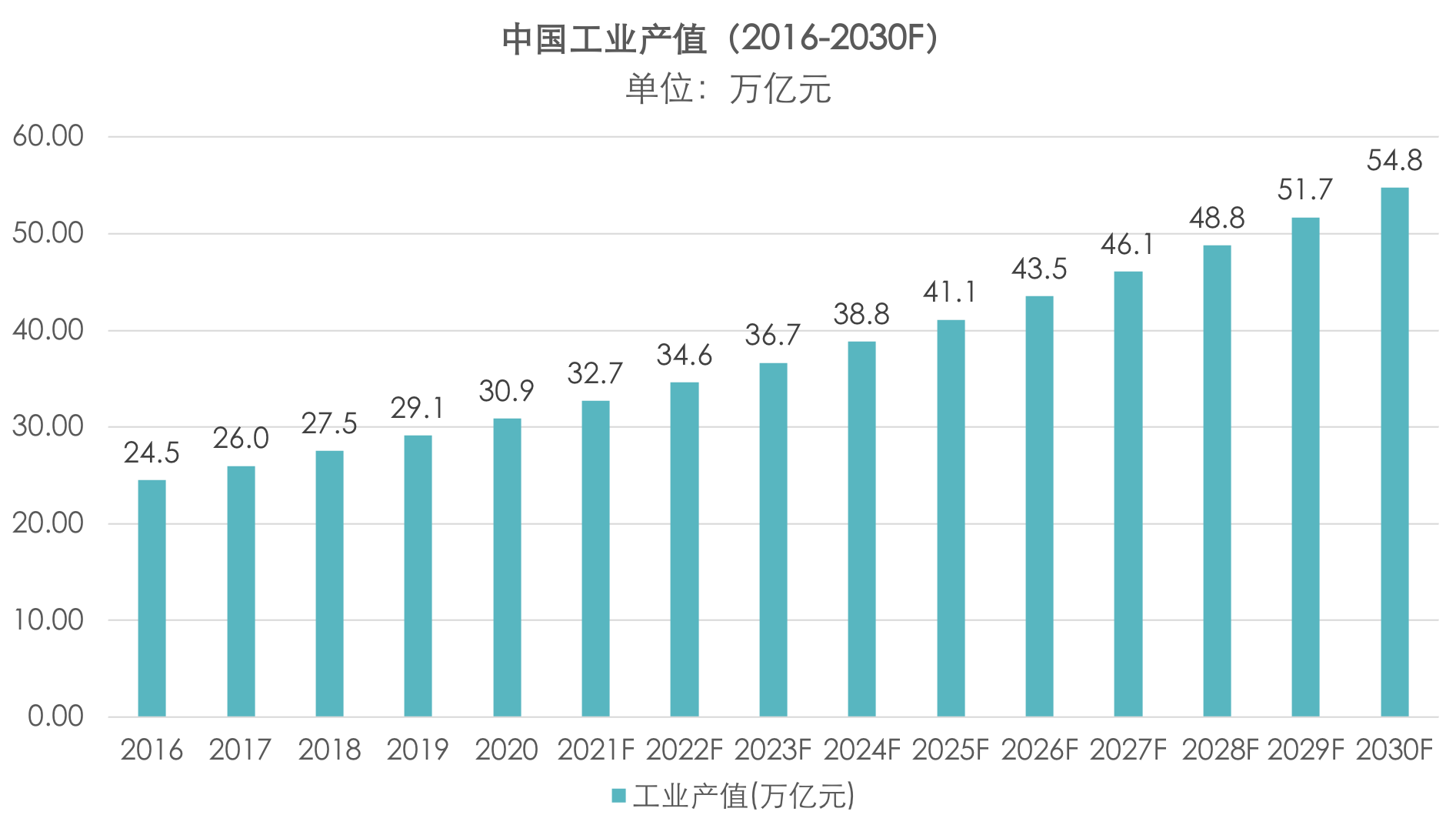
数据来源:国务院统计数据库
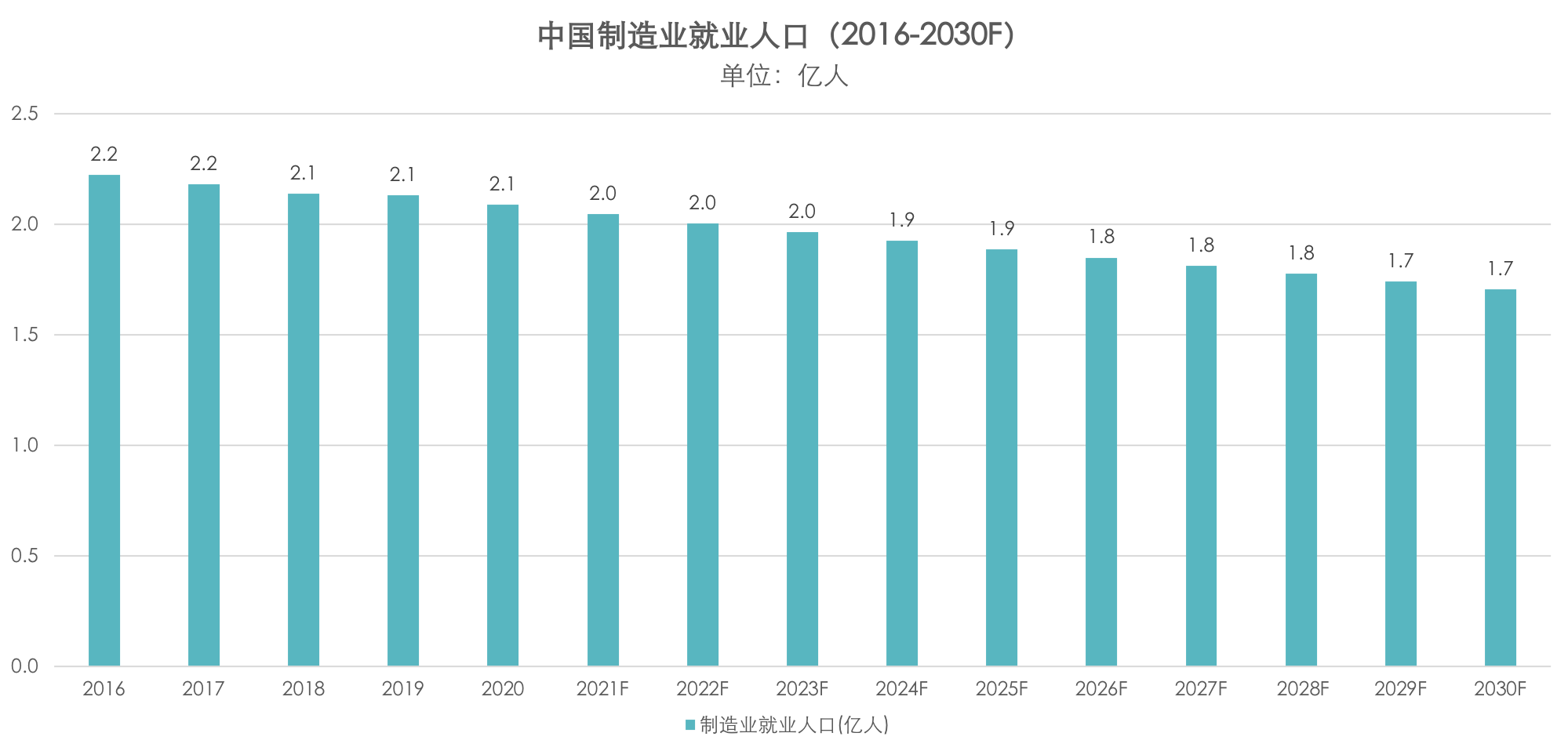
数据来源:国务院统计数据库
The Development Research Center of the State Council predicts that by 2030, the number of people employed in China’s secondary industry would drop to about 160 million. The industrial output per capita shows a tremendous upward trend due to the consistently growing industrial output and the declining number of workers. It is calculated that, 10 years later, by 2030, China’s annual industrial output per capita is expected to reach 321,000 yuan, which is 2.17 times higher than the 2020’s figure, 148,000 yuan.

数据来源:国务院统计数据库
If this scenario 10 years later can be realized, the company's production organization, value creation form and method, and employees’ skillset requirements would require a lot of changes. Furthermore, capital will also flow to industries with high per capita output and high value-added.
Speaking of high per capita output, many people will think of industries that incorporate advanced technology, digitalization, etc. So, what is the general per capita output of those intelligent manufacturing industries?
According to the sector classification of Sina Finance, we selected typical companies in each manufacturing sector (the market is large, the main business is relatively clear and single, and the trade volume is relatively small), plus some industry-specific companies, such as Huawei and Industrial Fulian, etc., compare their per capita output and per capita gross profit in 2019. The research method of this article is not necessarily rigorous, but it has a certain reference value.
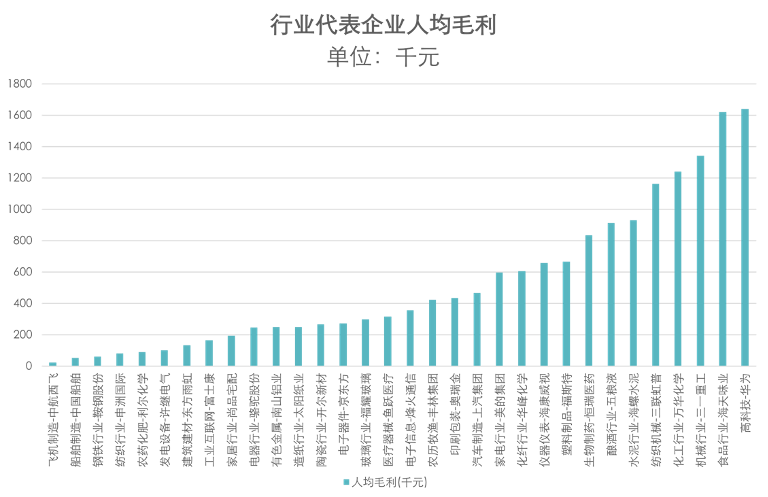
数据来源:新浪财经,工控网,前瞻行业研究,上市公司年报
It can be seen from the data that, compared with traditional industries, typical companies in manufacturing industries with a high degree of automation, such as chemical fiber chemical industry, equipment manufacturing, and high-tech industries, do have a higher per capita output. The per capita output of typical enterprises in the textile, home furnishing, building materials, medical equipment, and other industries is relatively low.
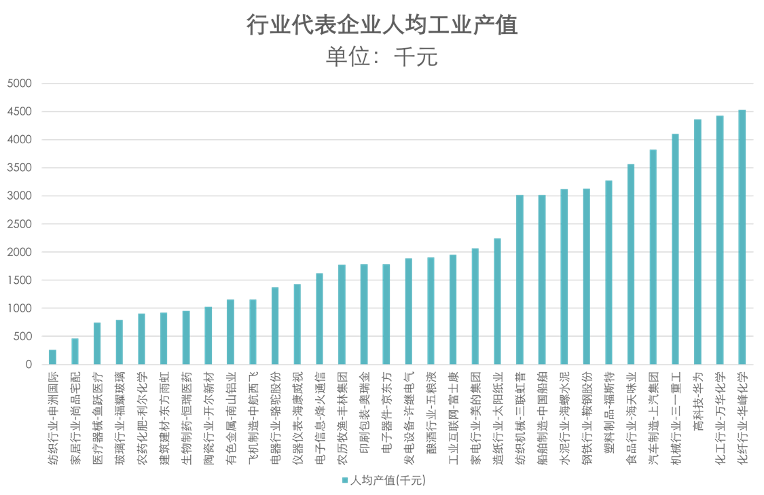
数据来源:新浪财经,工控网,前瞻行业研究,上市公司年报
In addition, by comparing the per capita gross profit (added value) of representative companies in various industries, it can be seen that, except for the food and wine industries, companies with high per capita gross profit (added value) tend to be those advanced technology industries and those with a high degree of production automation.
Therefore, we see that industries with high per capita output will maintain their global competitiveness, and industries with relatively low per capita output will inevitably continue to increase per capita output through technological upgrades to cope with the impact of labor shortages. At the same time, more capital will flow to industries with high per capita output and it will promote industrial upgrading, such as artificial intelligence, automation, digitalization, etc.

About society:
The above-mentioned upgrading process needs to be completed quickly in 10 years. Although it seems to fit the change of the labor force perfectly, the impact on the structure of the labor force may be huge. For example, under a highly digitized, intelligent, and automated production line system, a large number of industry employees may be forced out of the game due to mismatched skills.
Assuming that the working life of a generation of industry practitioners is 35 years, and assuming that the time of skill solidification is the first 20 years of work, those who fail to obtain the skills training required for industrial upgrading before this time limit will not be able to adapt to the drastically changing industry needs. About 43% of industry employees are facing the fate of being eliminated, diverted with stagnant income growth or income decline. Maybe our assumption is a bit extreme, but in any case, it will affect a large number of people.
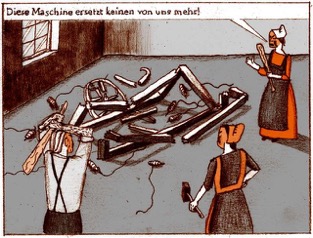
Let's take a look at some stories in history:
In the early nineteenth century, the era when automated textile machines began to be used in industry. In March 1811, a revolt of the textile workers broke out in Nottingham, England. Workers smashed machines and workshops. In the next two years, the movement spreaded throughout England. The result is that automated textile machines are widespread, factories no longer need skilled workers, only unskilled cheap labor, and a large number of industrial workers are unemployed.
In 1907, New York, 600 lamplighters climbed up the lampposts at dusk to lit the gas lamps on the side of the road, and climbed up the ladders to turn off the lights at sunrise. And soon, the birth of electric light patents replaced the work of these people.
In the 1960s, a group of well-trained people in the US federal government identified fingerprints sent by the police with the help of a magnifying glass. But they did not know that the computer fingerprint recognition technology that appeared in the 1970s would replace this job, and they would also lose their jobs.
In recent years, as artificial intelligence has become a hot topic, worries about “robots replacing humans” have been aroused. Some people developed interesting websites to calculate the probability of "being replaced by robots." Thus, when talking about AI and robots, it is unavoidable that people are reminiscent of propositions such as unemployment, job loss, and demise. Of course, where there is shadow, there must be light. The number of female laundry workers in the United States reached the peak of 500,000 in 1910, but fell sharply due to the electrical revolution, and reached zero in the 1990s. Meanwhile, women’s housework burden has also been greatly reduced, so that they have the energy to devote themselves to the workplace, have a greater voice in society, and also kicked off the men’s and women’s equal rights movement. Robotitc and artifical intelligence will not only replace part of human jobs in the labor market, but also create new opportunities for the progress of human society. "Human-machine integration" will also become the direction of future development.
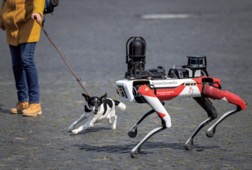
In recent years, with the rapid economic and social development, and the influence of the epidemic, changes in consumer behaviours and corporate demands have been accelerated. The level of digitization required by consumers is increasing, e.g. the shift from offline to online, and contact between people is gradually decreasing. For example, food distribution companies have experienced rapid growth in user usage during the epidemic. At the same time, the spread of the epidemic also affects the global supply chain. More companies are eager to improve resilience and solve the challenges of labor resumption and production by integrating automation into their business models, in order to improve the flexibility of their supply chains and reduce dependence on labour production. In the future, automation and digitalization will become the cornerstone and emerging trend of manufacturing companies, and consumer habits also spawned a wave of digitization, for example, E-commerce has taken an increasingly important position in consumers’ daily lives. Besides, as the penetration rate of work-out and the number of people who have regular exercise increase, the fitness market has witnessed rapid growth. The concept of “smart fitness community” and "home fitness" has gained increasing popularity.
Therefore, the changes in the next 10 years maybe the subversion of some people or the liberation of them, and new technologies and business structures may be born.
Standing then and looking back, for individuals, we should still maintain an open and positive attitude, learn and understand new things and new technologies, and don't stay in place.
For capital, it is suggested to smartly choose the industry and people that can smoothly take you to that point in time, and get rid of the original path to success.

数据来源:新浪财经,工控网,前瞻行业研究,国务院统计数据库, 国务院发展研究中心报告,各上市公司年报
